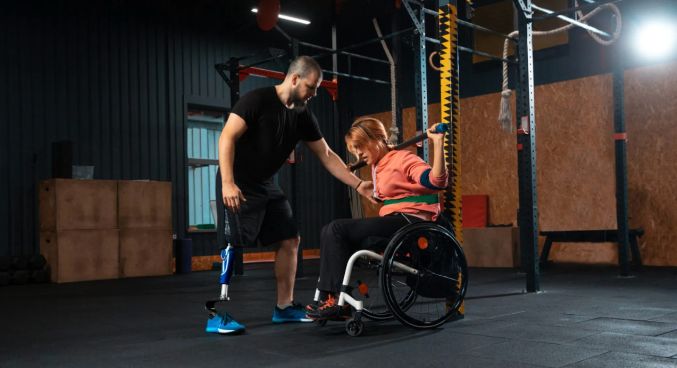
Thinking about opening a gym? It’s an exciting idea, but you’re probably wondering about the cost. “How much does it cost to open a gym?” is a question in every aspiring gym owner’s mind.
The truth is that costs can vary a lot, from a few thousand dollars for a small, home-based gym to hundreds of thousands for a big fitness center. But don’t worry, America’s Best Franchises is here to guide you.
In this guide, we’ll break down all the costs involved, from rent and equipment to staff salaries and marketing. We want to make sure you have a realistic understanding of what it takes financially to make your gym dreams a reality. We’ll help you crunch the numbers and get started on the right foot.
What to Expect Upfront for Gym Franchise Cost
Starting a gym requires a huge upfront investment. This covers the major startup costs to get your gym operational.
Location Costs
First, you need to find the right space for your gym. You’ll decide between leasing or buying a property. Leasing typically costs $45,000 to $90,000 annually, while buying involves a down payment between $105,000 and $150,000. Location, size, and amenities influence these costs.
Equipment Costs
Next, outfit your gym with the right equipment. This includes cardio machines, strength training equipment, and free weights. You can buy new or used equipment, or even lease it. New gym equipment costs around $75,000, while used equipment is more budget-friendly. Leasing involves ongoing monthly payments.
Renovation and Build-Out Costs
The space you choose might need renovations to become a gym. Think flooring, lighting, locker rooms, and showers. These costs can range from $30,000 to $100,000 depending on the scope of work and your design choices.
Licensing and Permits
Before opening, ensure you comply with local regulations by obtaining the necessary licenses and permits. These include business licenses, health permits, and zoning permits. Costs vary, so research your local requirements.
Operational Expenses
Once your gym opens, ongoing expenses keep it running smoothly. Let’s look at some major ones you’ll need to budget for.
Staffing Costs
You’ll pay salaries and wages to trainers, front desk staff, and cleaning crews. Factor in employee benefits and payroll taxes too. Staffing costs vary depending on your gym’s size and employee experience.
Utilities
Monthly bills for electricity, water, gas, and internet are unavoidable. These costs range from $500 to $2,000, fluctuating based on gym size and member count.
Insurance
Protect your gym and members with liability, property, and worker’s compensation insurance. These policies safeguard you from potential risks and accidents.
Marketing and Advertising
Attract and retain members through ongoing marketing and advertising online and offline. This is an ongoing investment to promote your gym and its services.
Maintenance and Repairs
Equipment breaks down, and facilities need upkeep. Budget for regular maintenance and repairs to keep your gym in top shape. This includes everything from fixing treadmills to repainting walls.
Additional Costs to Consider
We’ve discussed the major expenses, but some additional costs might catch you off guard. These hidden costs can accumulate, so be aware of them when planning your gym’s finances.
Technology and Software
Modern gyms need technology. You’ll likely need gym management software to handle memberships, scheduling, and billing. A point-of-sale system is also necessary for processing payments and tracking sales. These software solutions often come with monthly or annual fees.
Professional Services
You might need to consult professionals like lawyers and accountants for legal and financial compliance. Their services come with fees, so include them in your budget.
Contingency Fund
It’s wise to have a financial safety net for unexpected costs. Equipment might break down unexpectedly, or you might experience a slow period with fewer memberships. A contingency fund helps you handle unforeseen challenges.
Franchise vs. Independent Gym
Franchising means partnering with an established brand like Amazing Athletes or Yogasix Yoga Studios. You benefit from their brand recognition and proven system, but it comes with fees. Expect an initial franchise fee, potentially around $50,000 to $100,000, plus ongoing royalty fees, typically a percentage of your revenue.
Franchising offers a faster start and a built-in customer base due to the brand’s reputation. However, you have less control, needing to follow their guidelines and procedures.
On the other hand, starting an independent gym gives you complete creative freedom. You build your brand and customize services. Initial costs can be lower, especially if you focus on a niche or minimize equipment.
However, going independent means handling all marketing and brand-building yourself. Attracting members without a recognized brand also requires more effort.
If you want to work with professionals who can guide you, franchising is the ideal way to start your own gym.
How to Finance Your Gym Franchise
The most common way is through traditional financing like small business loans or lines of credit. Banks and credit unions offer these, but you’ll need a solid business plan and good credit. SBA loans are another option, often with favorable terms for startups.
If traditional financing isn’t suitable, consider alternatives. Crowdfunding platforms let you pitch your gym concept directly to the public and raise funds from supporters. You could also seek investors or venture capital firms who invest in promising businesses.
Find the Best Gym Franchise Opportunity
So, how much does it cost to open a gym? It depends on the location, size, and equipment. You could spend as little as $100,000 for a small, specialized gym, or upwards of half a million or more for a large, fully equipped fitness center.
Remember, it’s not just the initial setup costs; you also need to budget for ongoing expenses like staff salaries, utilities, and marketing. And it’s always smart to have a little extra set aside for unexpected costs.
With careful planning and smart financial decisions, you can open your own gym. America’s Best Franchises can connect you with franchise opportunities that fit your budget and goals.


